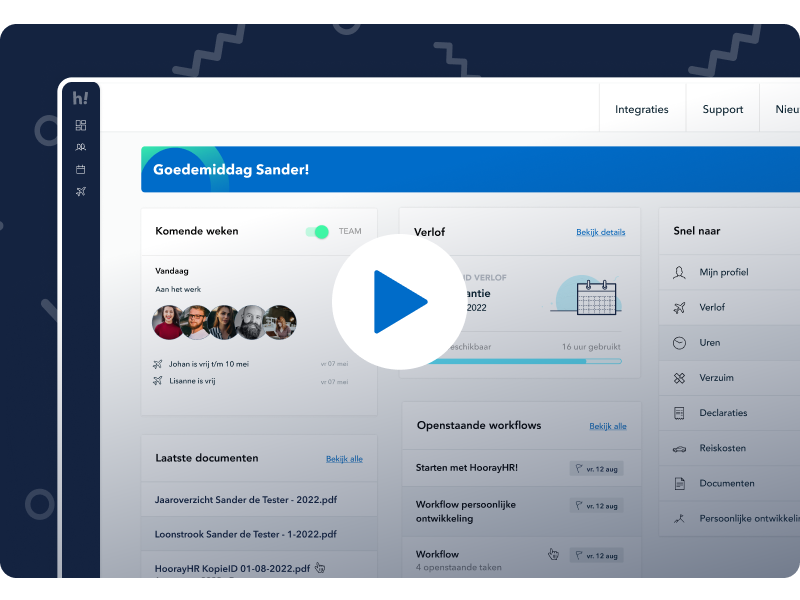What is important during the new hire training program?
Table of contents
During the onboarding of a new colleague, there are many processes that need to be carried out. For example, the administration must be in order with a wage tax form and contact details of the employee. There are also several practical tasks that need to be carried out. During the familiarisation period it is especially important that the employee gets a good idea of the working method within the organisation, gets acquainted with all colleagues, but also discusses the tasks for the new colleague. It is therefore a good idea to draw up a new hire training programme together with the new employee. In this article we will tell you what the most important things are in the program and how you can tick off these tasks easily with HoorayHR Workflows.
What is included in the new hire training programme?
During the training programme, a new employee goes through a technical and social integration in a company. The new employee gets to know his own responsibilities, the team and the company culture. In addition, the new employee gets to know the processes within the organisation. The training of new employees is carried out via a training programme and the duration of this programme varies per new employee. For one employee, the training programme takes a few days, while for another newcomer it can sometimes take a few weeks or even a month before the employee is fully trained.
Different employees within the company are responsible for the onboarding and training programme of a new colleague. The employer, for example, is responsible for the administration of the new employee, while the manager – of the department where the new employee is working – takes the employee along in the training programme.
Discover HoorayHR!
How do you train a new employee well?
When the training programme is structured, it consists of a comprehensive and systematic process. During the training programme, the employee is given all the information required in order to achieve their goals and complete their tasks. In addition to the functional principle of the training programme, the social side of the training programme provides a token of appreciation. “Welcome to the team”, “Nice to work on projects together”, are all words from colleagues that create motivation and trust in the new employee. The training programme of a new employee forms the basis for the new colleagues in a team. In this way, the new employee is motivated and productive at work. Ultimately, this results in an investment for the future!
Why is a new hire training programme so important?
Where one employer has a complete onboarding process and training programme ready for the new employee, another employer lets the new employee join the team without any preparation. With a clearly defined training programme, companies are able to ensure that new employees quickly feel at home and are productive at work. With a structured, pleasant and motivating training programme, it is possible to retain employees even in times of labour shortages. From here, you take the employee with you into the organisation, after which you can achieve many goals together.
If the familiarisation process does not run according to a training programme, it may be that the process is not structured. In this way, ambiguities often arise and expectations are not clear. If the new employee leaves during the trial period or shortly afterwards, not only are the recruitment costs unpleasant, it will also take some time before the position can be filled again.
Examples of a training programme
There are several examples of a workflows for the onboarding of new employees. With HoorayHR we offer the possibility to create workflows. With simple tasks you can create a structured onboarding program. With HoorayHR we offer the possibility to use our template. It is also possible to create your own template with tasks. The employee can easily complete the tasks of the onboarding program. Are the tasks completed? Then it is time to start working independently with different tasks and responsibilities.
Disclaimer
Important! Our articles and posts on our website are intended for information purposes and are not binding. They do not constitute full legal advice and are only provided to share information about specific HR topics. The content of this article is not intended to replace binding legal advice that will apply to your specific situation.



